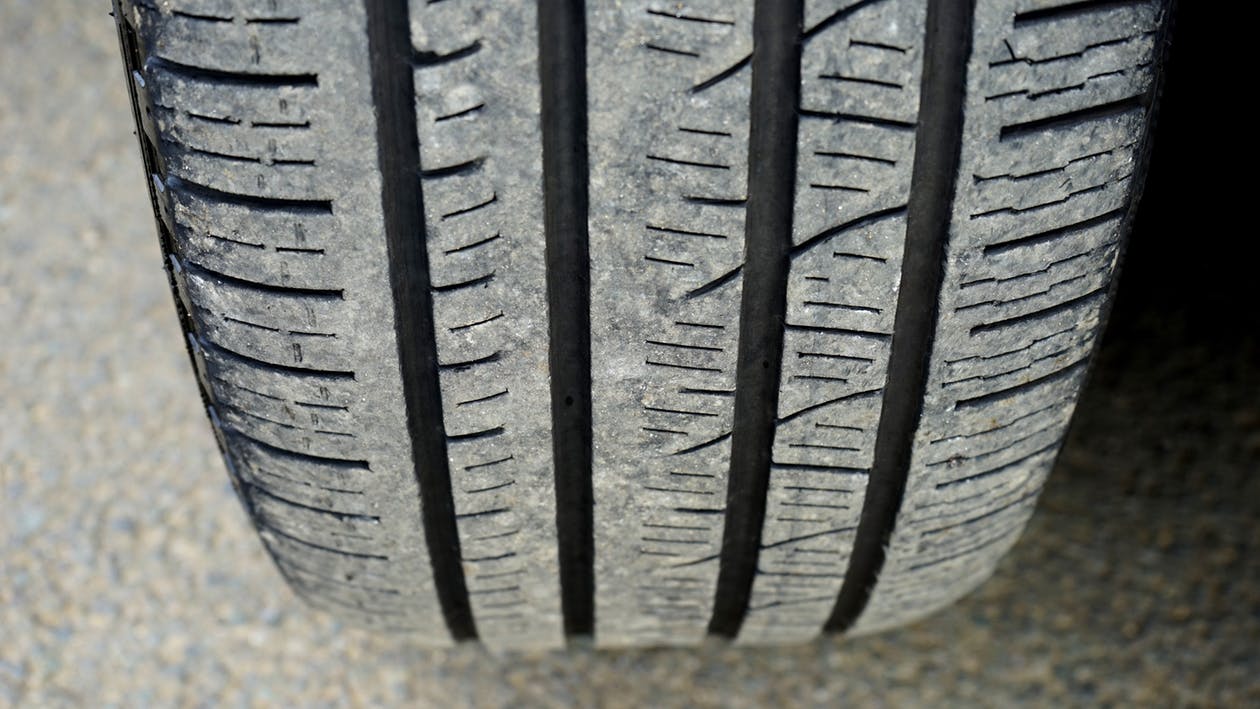For years, Similac and Enfamil were popular baby formulas, often given to premature babies in NICUs. However, for decades, there has been research suggesting that cow’s milk-based formulas can make premature infants ill.
Our personal injury lawyers are helping children and families who have been harmed by NEC and other conditions related to the consumption of Similac and Enfamil.
Similac and Enfamil Baby Formula Lawsuits
Crosley Law is investigating toxic baby formula cases and legal claims against Mead Johnson & Company (makers of Enfamil) and Abbott Laboratories (makers of Similac) for failing to warn consumers that their cow’s milk-based formula products may cause premature babies—babies born before 37 weeks—to develop necrotizing enterocolitis (NEC).
Premature babies need extra nutrition to support their underdeveloped bodies, and many doctors recommend baby formula as the best option to parents (over pasteurized donor breast milk) if their newborn won’t breastfeed. Making matters worse, Abbott Laboratories and Mead Johnson & Company neglect to add a warning label to their cow milk-based formula products, and unsuspecting parents have been putting their premature newborns at risk of NEC for years.
Prior to sale, baby formula manufacturers have a responsibility to ensure the safety of their products. As a result of their negligence, toxic baby formula lawsuits are being filed across the country and litigation is expected to be consolidated in into multi-district litigation (MDL).
MDLs help expedite pretrial and settlement procedures, and plaintiff’s lawyers will be seeking the largest settlements possible to cover damages including medical and out-of-pocket expenses, pain and suffering, lifelong health care and treatments, and funeral expenses if the baby died from NEC, or complications from NEC.
RELATED: Texas Defective Produce Lawyers – Crosley Law
What is Necrotizing Enterocolitis (NEC)?
NEC is a devastating intestinal disease that occurs primarily in low-weight, premature newborns. Bacteria invade the wall of the intestine, causing inflammation, serious infection, and the death of intestinal tissue. Necrotizing enterocolitis often develops after cow milk formula feedings begin.
Breaking NEC down into parts:
- Necrotizing means to cause the death of tissue.
- Entero means relating to the intestine or bowel.
- Colitis means relating to inflammation, usually of the colon.
Once the intestinal wall is destroyed by bacteria, it can cause a hole or tear and allow stool to spill into the infant’s abdomen, resulting in life-threatening complications such as sepsis, multi-organ failure, and death. Severe, lifelong health complications from NEC may include development delays, cerebral palsy, and short bowel (short-gut) syndrome (SBS).
What are the symptoms of NEC?
When a child is born premature, the professionals in charge of your infant’s care should monitor for:
- Constipation
- Yellowish or greenish vomit
- Difficulty eating and gaining weight
- Fluctuations in temperature
- Diarrhea with dark-colored stools or blood
- Reduced heart rate and low blood pressure
- Increased abdominal pressure—swollen, red, or tender abdomen
Different Types of NEC
According to healthcare providers, NEC in premature babies is usually classified as one of three different types based on when symptoms start. The primary types include:
- Atypical: When a premature infant develops NEC in the first week of life, which is very rare.
- Transfusion-associated: When an infant lacking red blood cells (anemic) develops NEC after a blood transfusion.
- Classic: When an infant is stable but develops NEC without warning. Classic is the most common and affects infants born before 28 weeks of pregnancy, usually within three to eight weeks after birth.
What is worse than one case of NEC? Multiple cases. NEC outbreaks can happen in neonatal intensive care units (NICUs), and during an outbreak, several infants can develop NEC at the same time.
Lastly, it is extremely unlikely—but possible—for full-term babies to get NEC. This type of NEC is called Term Infant and usually happens in conjunction with birth defects.
How Many Babies Affected by NEC in the United States?
According to the CDC, preterm births accounted for 1 of every 10 infants born in the United States in 2020. [1] So, of the 3,605,201 babies born, roughly 360,520 were born premature.
In prior years, the National Institute of Child Health and Human Development (NICHD) estimated that NEC affected about 9,000 out of every 480,000 preterm babies born each year, which is roughly 1.875%.[2] The math follows, then, that nearly 6,760 premature infants born in 2020 suffered from NEC.
Treatment for Premature Babies with NEC
If only a small area of intestine is affected, and if the intestine is not already perforated, medical treatment is attempted before surgical treatment. Once a baby is diagnosed with NEC, stopping the formula feeding is the first step. From there, medical treatment may include:
- Running a NG (nasogastric) tube from the premature baby’s nose to his or her stomach (done to keep their stomach empty).
- Intravenous (IV) feeding to deliver nutrients, fluids, and medications to the baby.
- Starting an antibiotic treatment and assessing the need for surgery.
- Taking X-rays. X-rays may show air on the outside of the intestines in the abdomen, or if your newborn’s intestine has a bubbly appearance.
- Checking stools for blood and taking frequent blood tests to detect early signs of infection.
- Giving extra oxygen or using a breathing machine if the newborn’s abdomen is so swollen it interferes with breathing.
- Isolating the baby to keep any infection from spreading and causing a NICU outbreak.
- In extremely severe cases, a blood transfusion may be necessary.
If a child does not respond to medical treatment, surgery will be necessary. About 50% of all infants with NEC will require surgery, and although NEC causes significant morbidity after surgical treatment, survival rates for surgically treated NEC have improved over the last four decades.[3]
During surgery, a pediatric surgeon examines the intestine and removes only the necrotized tissue, leaving as much healthy intestine as possible. A temporary ostomy (or opening in the wall of the abdomen) is typically created to allow the bowel to recover and heal during the first surgery.
A colostomy may also be required. In this procedure, part of the colon is rerouted to an artificial opening in the abdominal wall to bypass the damaged part of the colon. Another operation to examine the abdomen may be required 24 to 48 hours later to determine if the diseased has progressed.
Multiple Organ Failure
If the newborn is not responding to the IV feeding after multiple surgeries have been completed, the lack of nutrition or the inability to absorb the nutrition may cause multi-organ failure. If NEC isn’t challenging enough, premature babies also have a very high risk of developing intestinal failure-associated liver disease (IFALD). In some cases, the surgery to treat NEC by removing dead intestinal tissue makes IFALD much more difficult to overcome. Think of it like jaundice for a newborn—their skin tone may even turn yellowish.
In the worst-case scenarios, a newborn may need a liver or intestinal transplant, or die. In the best-case scenario, fish oil monotherapy, or Omegaven® therapy, may be needed to cure IFALD. Omegaven® is a fish oil-based lipid that was approved by the FDA in 2018 to help premature babies overcome intestinal failure developed in the NICU after birth.[4] NEC may also affect the brain, kidneys, and lungs.
One Premature Baby’s Battle with NEC After Consuming Enfamil Formula
Crosley Law recently agreed to represent the family of a premature baby born at 26 weeks and weighing less than two pounds. Immediately admitted to the neonatal intensive care unit, the newborn received Enfamil baby formula as a supplement to the mother’s breast milk for nutrition.
After 8 weeks of formula feeding, the premature baby suddenly had a swollen belly. After testing, doctors diagnosed the infant with NEC, and immediate surgical treatment was recommended to the parents due to the intense abdominal pressure.
Roughly 48 hours apart, two surgeries were performed to remove over 80% of the 100 cm of intestine the child was born with that had become dead tissue. A third surgery (sometimes referred to as a Humpty Dumpty surgery) was required weeks later to reconnect the remaining intestine to other vital organs once the baby reached a weight that could support a third surgery. Between surgery number two and number three, the infant lived with a colostomy bag.
The procedure of removing such large amounts of intestine led to liver failure and the need for a liver transplant was considered. Fortunately, our client’s newborn was included in an Omegaven® trial in Texas prior to the FDA’s approval of drug.
Nevertheless, the destruction of so much intestine developed into short bowel (short gut) syndrome, a malabsorption condition that makes it very hard for the body to absorb fluids and nutrients. A child with short gut syndrome needs lifelong care and attention to get the right nutrition to grow and mature properly.
But not every child will be as fortunate. The NICHD estimates that fifteen to forty percent of infants with NEC die from the disease.[5]
Studies Examining NEC and Raising NEC Awareness
The Food and Drug Administration (FDA) has not recalled any Similac or Enfamil baby formulas, and their packaging continues to lack a warning about increased risk of NEC, despite more and more studies documenting higher risks of NEC associated to cow’s milk-based formulas:
- In 2002, the FDA recommended that NICUs no longer use powdered infant formula.[6]
- In 2009, a study published in the Journal of Pediatrics concluded that an exclusively human milk-based diet is associated with significantly lower rates of NEC when compared with a mother’s milk-based diet that also included cow’s milk-based products.[7]
- In 2012, a study published by the American Academy of Pediatrics issued a statement that premature infants should only be fed human milk after they found that premature infants are six to ten times more likely to develop NEC when they consumed only cow’s milk-based formula.[8]
- In 2014, Jennifer Canvassar founded the NEC Society after her son died from complications of NEC. The NEC Society brings together families, healthcare professionals, and researchers who are committed to a vision of building a world without NEC through research, advocacy, and educational strategies. The NEC Society says that NEC claims the lives of about 500 infants per year, while accounting for almost 20% of NICU costs—which is more than $5 billion annually in the United States.[9]
- The NEC Society established NEC Awareness Day (May 17) to raise more consciousness on the fight against NEC worldwide.
- Please note the NEC Society is a 501(c)(3) nonprofit organization and is not affiliated with Crosley Law or any other law firms pursuing Similac or Enfamil NEC baby formula lawsuits against Abbott Laboratories and Mead Johnson & Company.
- In 2019, a study by Cochrane found that feeding with artificial formula results in faster rates of growth, but that growth comes with a cost of a near-doubling of the risk of NEC for preterm infants.[10]
Call the Experienced Personal Injury Attorneys at Crosley Law
If you were a parent unaware of the potential deadly harm in feeding your infant Enfamil or Similac cow milk formula products, you need the help of legal experts to win your case.
Premature infants have weaker immune systems and digestive systems to fight off infections. If a product like baby formula is intended to provide a healthy benefit, such as help an underdeveloped baby gain weight, it should do just that—without unnecessary or avoidable harm. It’s not your fault your baby developed NEC.
If your child:
- Was born prematurely
- Consumed Similac or Enfamil at the hospital
- Was diagnosed with NEC by hospital doctors
- Is currently under 18 years of age
Please call Crosley Law for a free, confidential, no-obligation evaluation. If we take on your child’s case, it will cost you nothing to be our client, and we only get paid if a settlement is recovered for your family.
References
[1] Hamilton BE, Martin JA, Osterman MJK. Births: Provisional data for 2020: Vital Statistics Rapid Release; no. 12. Hyattsville, MD: National Center for Health Statistics. May 2021 Retrieved from https://www.cdc.gov/nchs/data/vsrr/vsrr012-508.pdf
[2] Retrieved from: https://www.nichd.nih.gov/health/topics/nec/conditioninfo/risk#f2
[3] Fredriksson, F., & Engstrand Lilja, H. (2019). Survival rates for surgically treated necrotising enterocolitis have improved over the last four decades. Acta paediatrica (Oslo, Norway : 1992), 108(9), 1603–1608. Retrieved from https://doi.org/10.1111/apa.14770
[4] Retrieved from https://www.texaschildrens.org/texas-children%E2%80%99s-leads-effort-get-lifesaving-drug-approved-fda
[5] Lin, P. W., Nasr, T. R., & Stoll, B. J. (2008). Necrotizing enterocolitis: recent scientific advances in pathophysiology and prevention. Seminars in perinatology, 32(2), 70–82. Retrieved from: https://doi.org/10.1053/j.semperi.2008.01.004
[6] Centers for Disease Control and Prevention (CDC) (2002). Enterobacter sakazakii infections associated with the use of powdered infant formula–Tennessee, 2001. MMWR. Morbidity and mortality weekly report, 51(14), 297–300. Retrieved from: https://pubmed.ncbi.nlm.nih.gov/12002167/
[7] Sullivan, Sandra et al. An Exclusively Human Milk-Based Diet Is Associated with a Lower Rate of Necrotizing Enterocolitis than a Diet of Human Milk and Bovine Milk-Based Products. The Journal of Pediatrics, Volume 156, Issue 4, 562 – 567.e1. Retrieved from: https://www.jpeds.com/article/S0022-3476(09)01085-3/fulltext
[8] SECTION ON BREASTFEEDING, Arthur I. Eidelman, Richard J. Schanler, Margreete Johnston, Susan Landers, Larry Noble, Kinga Szucs, Laura Viehmann; Breastfeeding and the Use of Human Milk. Pediatrics March 2012; 129 (3): e827–e841. 10.1542/peds.2011-3552 Retrieved from: https://publications.aap.org/pediatrics/article/129/3/e827/31785/Breastfeeding-and-the-Use-of-Human-Milk
[9] Retrieved from: https://necsociety.org/wp-content/uploads/2016/10/NEC-Advocacy-info-sheet.pdf
[10] Quigley M, Embleton ND, McGuire W. Formula versus donor breast milk for feeding preterm or low birth weight infants. Cochrane Database of Systematic Reviews 2019, Issue 7. Art. No.: CD002971. DOI: 10.1002/14651858.CD002971.pub5. Retrieved from: https://www.cochrane.org/CD002971/NEONATAL_formula-versus-donor-breast-milk-feeding-preterm-or-low-birth-weight-infants
The content provided here is for informational purposes only and should not be construed as legal advice on any subject.








